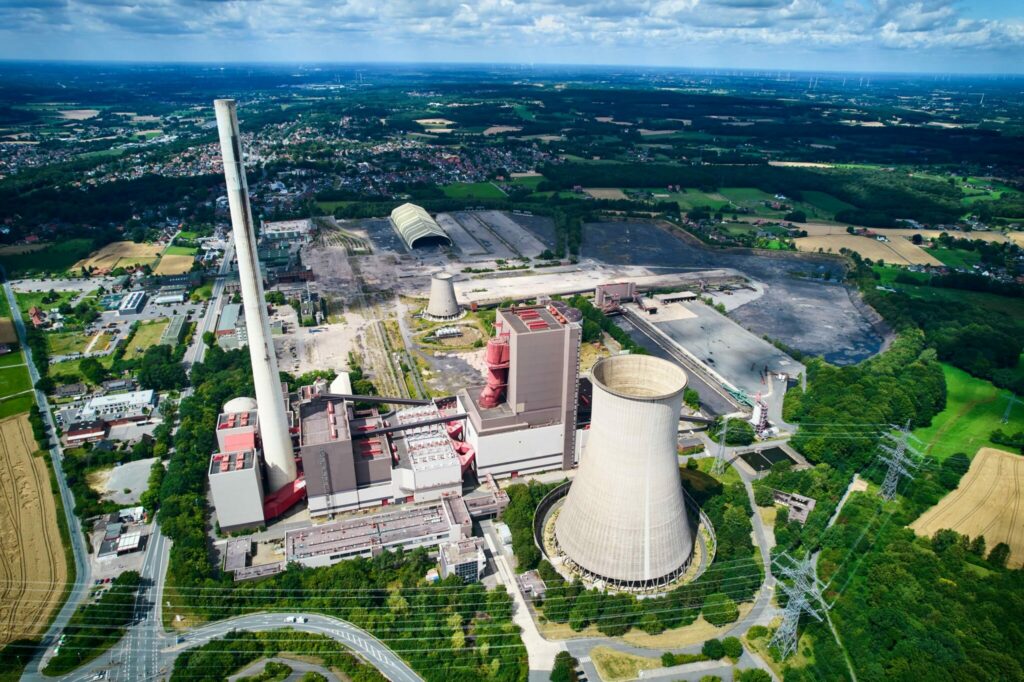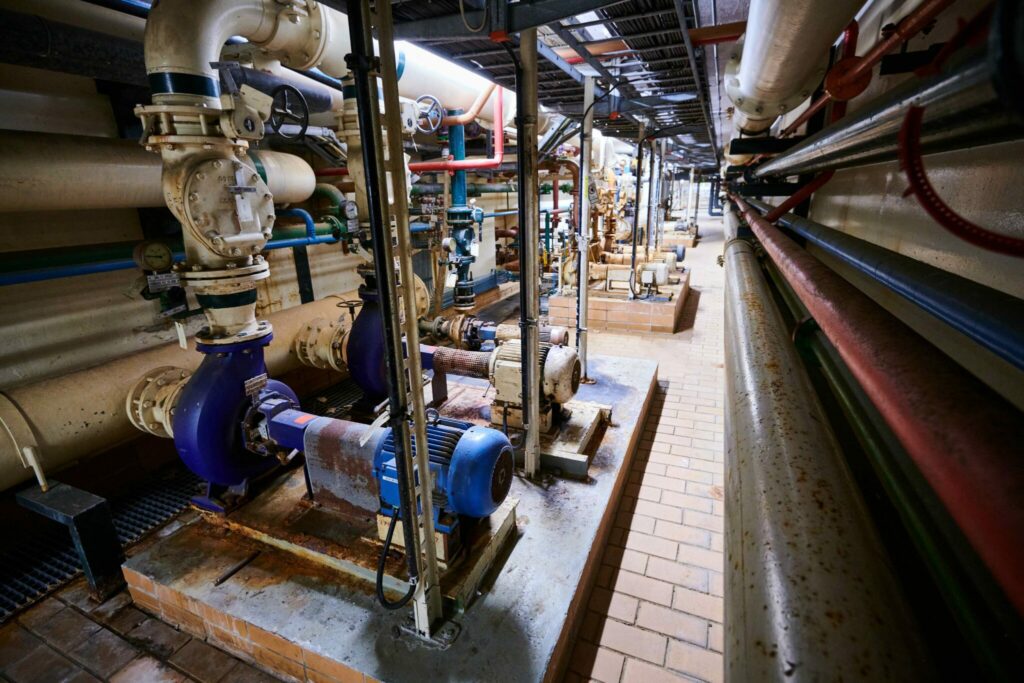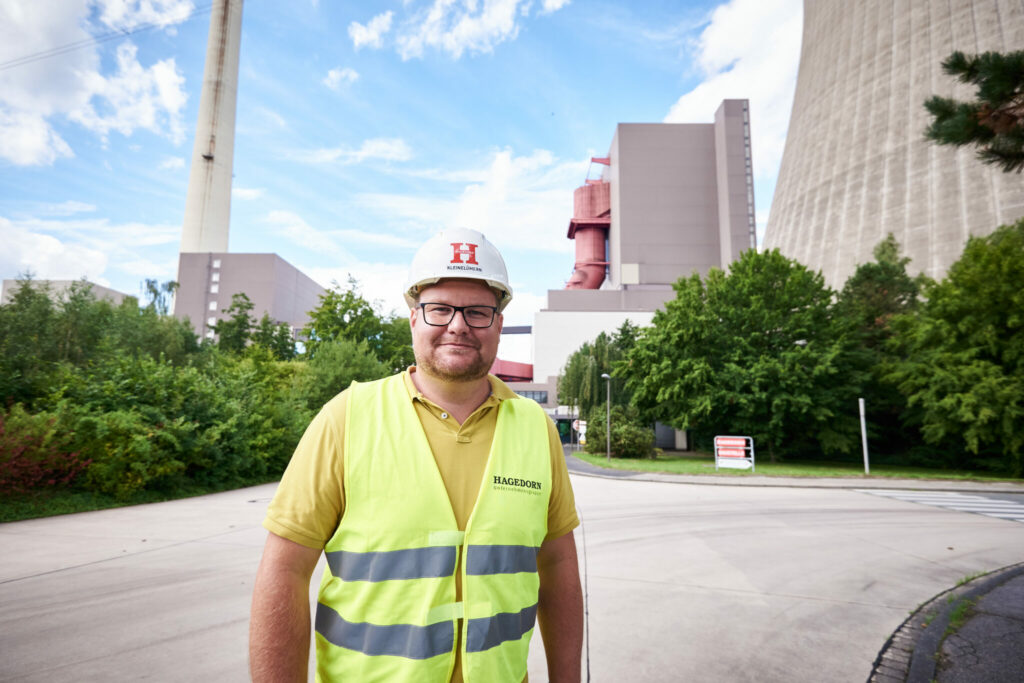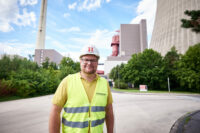
Coal is being replaced by wind

At the former coal-fired power plant in Ibbenbüren, a project is starting that is crucial for the energy transition in Germany. The transmission grid operator Amprion is planning a converter station on the site of the power plant to connect offshore wind farms in North Rhine-Westphalia for the first time. To this end, the Hagedorn group of companies has acquired the site from RWE Generation SE in order to dismantle the power plant and cooling tower and hand over the site to Amprion ready for construction. Hagedorn is the only company in Germany that has already completely taken over and successfully revitalised three power plant sites. For the revitalisation of the site, Hagedorn is using this experience and also its strong process chain.
Compared to other dismantling projects, the demolition of power plants is associated with special challenges. “This is not only due to the size of the buildings,” says project manager Stefan Kleinelümern. The boiler house and cooling tower measure 120 metres, the chimney 275 metres. The disposal of the amount of polluted materials, the logistics of the many heavy transports and the structural preweakening of the high building parts are also added to this project.
The construction-ready area is to be handed over to Amprion in summer 2026. The deconstruction of the beds and foundations is mostly complete. Some partial areas, however, will only be cleared to a certain depth. In order to obtain precise massing data for the building cubature and the façade and roof areas, existing BIM models were used in the preliminary planning. This is not only helpful for the calculation, but also for planning the remediation of pollutants and the deconstruction of the building.
In order to deal with the time pressure, the project is divided into critical and less critical areas. This allows Stefan Kleinelümern’s team to bring areas forward and put others to the back. “This enables us to clear the site on time,” says the project manager. More than 100 Hagedorn Group employees will be working on the site at the same time during the peak phase. For the experts, the time pressure is challenging, but doable: “We are convinced that we will achieve a successful project completion thanks to our strong team, a lot of expertise, experience and good planning,” Kleinelümern emphasises. Special atention is paid to occupational health and safety throughout the project. This applies to every construction site of the Hagedorn Group, but comes into even sharper focus on a project of this magnitude.
Amprion takes over the construction-ready area and plans the first connection of offshore wind farms in North Rhine-Westphalia with the BalWin2 offshore grid connection system. Due to its great length of over 380 kilometres, direct current technology will be used. This makes it possible to transport large amounts of energy over long distances with low losses. Since the transmission grid in Germany mainly uses alternating current technology, a converter station is needed near the so-called grid connection point (Westerkappeln substation). It converts the incoming direct current into alternating current so that it can be fed into the transmission grid.
“In order to achieve the federal government’s acceleration targets for offshore wind energy, we have to put the line into operation three years earlier than originally planned,” says Christoph Evers, overall project manager at Amprion. “The acquisition of the power plant site is a big step on the way there and also has a symbolic character: coal is to be replaced by wind at the Ibbenbüren site.”
The two planned offshore grid connection systems BalWin1 and BalWin2 connect wind farms in the North Sea with the transmission grid on land. Both projects can transmit a capacity of 2,000 megawats each. Together, this corresponds to the demand of about 4 million people. They are scheduled to go into operation in 2029 and 2030. From the North Sea wind farms, the cables will initially run 155 and 165 kilometres at sea, respectively. On the land-based part of BalWin1 and
BalWin2, about 205 and 215 kilometres of underground cables will be laid, respectively. To reach their respective grid connection points in Wehrendorf (BalWin1) and Westerkappeln (BalWin2), the projects will separate on the last part of the route.
Photos: Hagedorn
Information
Hagedorn Management GmbH
Judith Roderfeld
Werner-von-Siemens-Str. 18
33334 Gütersloh
Tel.: 05241 500512748
roderfeld@ug-hagedorn.de
www.unternehmensgruppe-hagedorn.de








